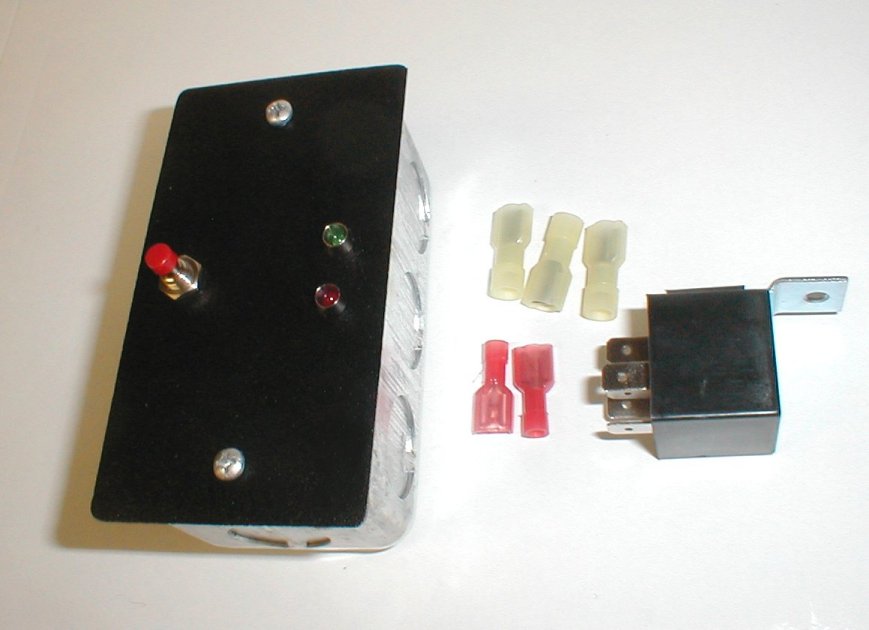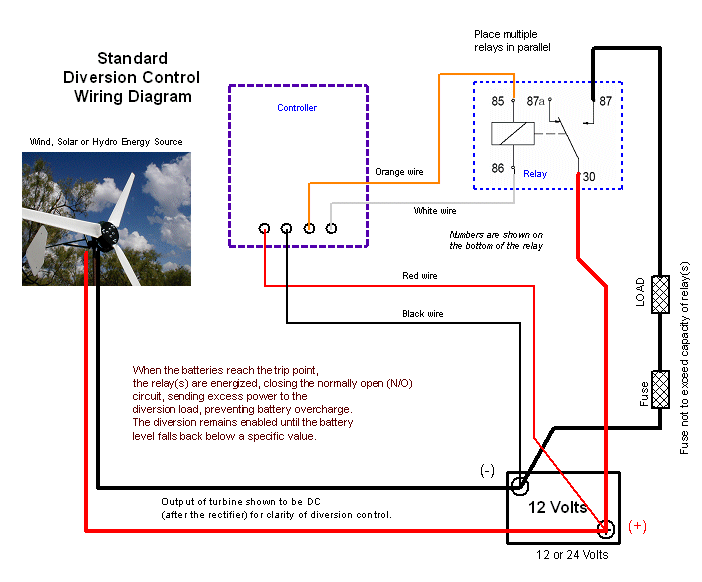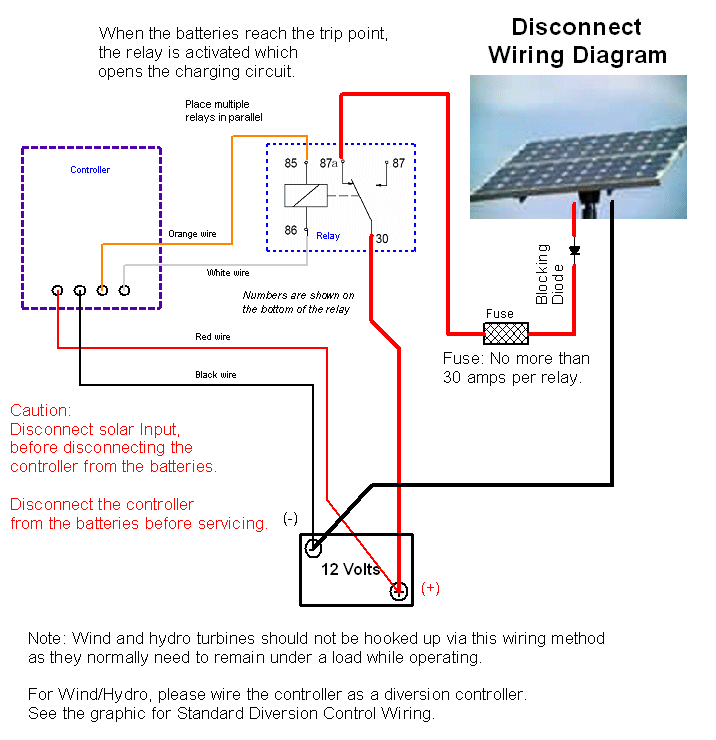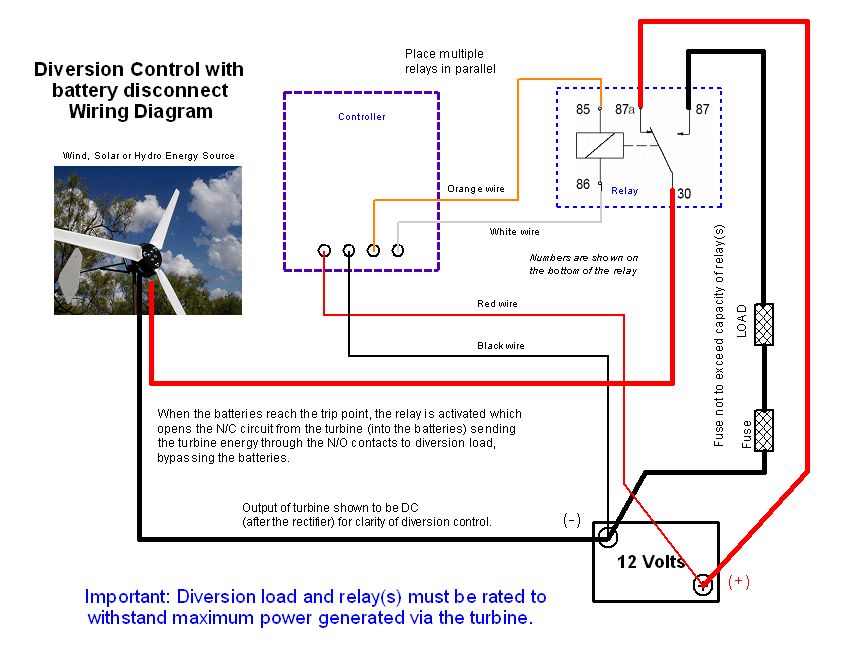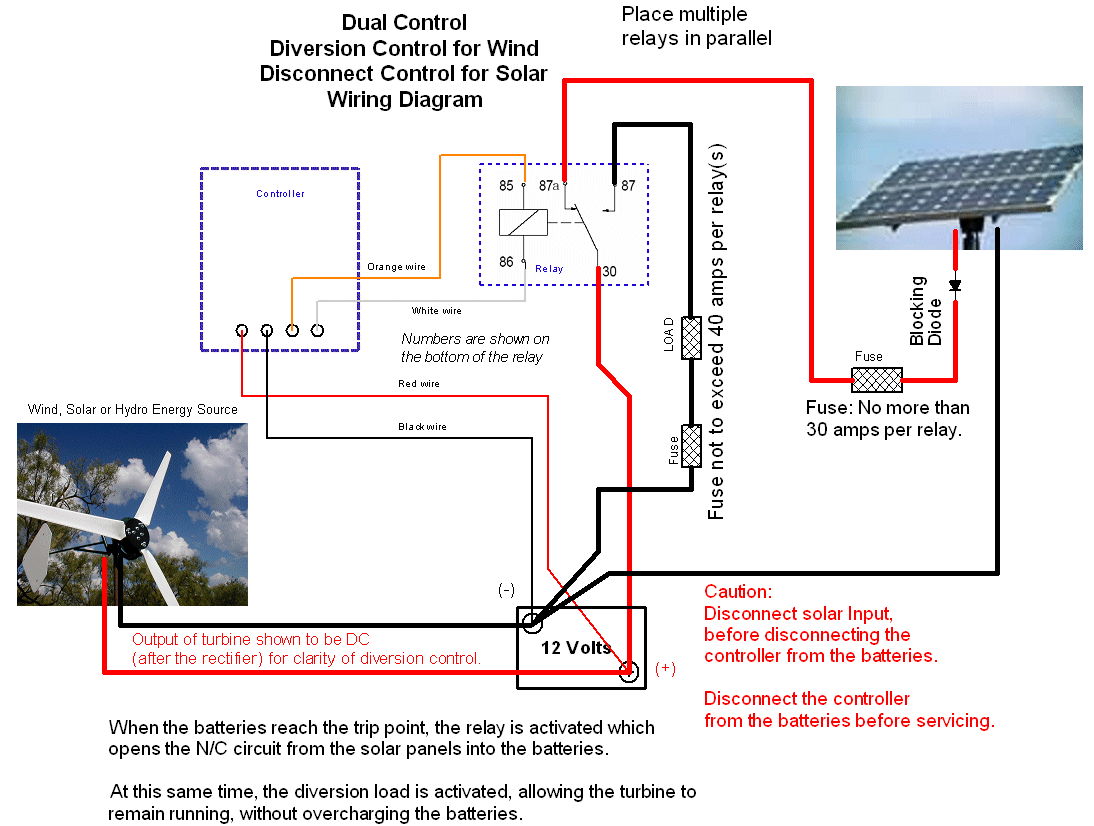This diversion controller has most of the features of our larger controller, but is much more compact and economical due to to the fact it is specifically designed for 12 volt systems.
Some of the key features of this controller are:
- Microprocessor controlled -- This is very important for both stability and functionality.
- User changeable settings -- Several controllers on the market set the dump level, and that's that!
- High amp rating - 40 amps with the one included relay -- You may add more if you need more amps.
- Battery status LED - Several controllers do not tell you what's going on - This one does!
- Push to test. Ever wonder if your controller & load are working OK?
- Steel enclosure. This compact unit mounts in a standard outlet box (included).
- Long leads for easy termination.
- Can divert the source from the batteries to the load, or dump both the batteries along with the source.
Some specifics about the points made above.
The microprocessor is the heart of the controller. It is given the battery voltage and the user changeable trip points. This information is analyzed and acted upon.
The Battery level is checked, and based on that info, the Green LED flashes or is illuminated as follows
- (One) Flash indicates the battery is less than 12 volts (12 volt system - Double for 24 etc)
- (Two) Flashes indicates the battery is 12 to 12.5V
- (Three) Flashes indicates the battery is 12.6 to 13v
- (Four) Flashes indicate the battery is 13.1 to 13.5V
- ( Five) Flashes indicates the battery is above 13.5V but less than 13.9V (Settings are adjustable)
Steady green means the battery is full.
The red LED is illuminated when the battery is being dumped at 14.5v (or the charge source diverted.)
The dump remains active for a minimum of 5 seconds, at which time it is checked by the microprocessor. If battery voltage drops below the "Dump Cancel " level, the dump is disabled, otherwise the dump is continued and rechecked every 5 seconds.
When you click the "TEST" push-button - the 5 second cycle is started (one time, unless the batteries are within the "Dump Start" and "Dump Cancel" zone.)
Settings are user changeable!! By simply turning a simple potentiometer with a small screwdriver, you can quickly adjust the trip point.
High amp rating -- 40 Amps as configured! -- This is a respectable controller.
There is nothing stopping you from adding more relays for nearly an unlimited amount of load capability.The internal regulator can handle 4 relays (additional relays are available on our site.)
The enclosure is heavy gauge, solid steel - Ready to mount. -- No plastic, no junk, simple and rugged.
About load diversion.
The basic operating philosophy of a diversion controller is quite simple. Monitor the battery voltage, and if it should rise to a predetermined level, connect a diversion load (or "Dummy Load"), of sufficient size, to the battery or energy source to prevent the battery voltage from increasing any further. This is a very simple, yet very effective way of preventing battery overcharging. All alternate energy systems should have some form of battery overcharge protection.
Several schools of thought on the subject.
- The source of power (wind turbine, solar panels etc.) -- should remain connected to the batteries while the dump is active.
- The source should be diverted to the load directly and disconnected from the batteries.
We happen to believe that is far better to leave the wind turbine connected to the batteries at all times. Why? When you remove the battery level voltage from a wind turbine and send it's power directly to a load, then it sees for all practical purposes a short circuit (depending on the resistance of the load and lead wires.) This may cause the turbine blades to slow dramatically and in some cases bring it to a halt. This braking action can cause heat build up in the stator if it is repeated every few seconds or so (if the battery is just a little over the top). When you allow the turbine to see the batteries, along with the load, the turbine remains more within it's design realm -- always a good thing.
The internal relays are configured to dump the batteries along with the source, but if you desire to disconnect the source from the batteries and send it to the load directly, simply utilize the N/C contacts of the relays as well. See the wiring diagrams below for further information.
How to compare this controller to others.
-
Do they have battery status indication?
-
Do they have a dump active indication?
-
Are the dump levels user changeable?
- Are they microprocessor controlled?
- Do they come with a enclosure?
-
Can they truly pull in multiple relays without burning up or do they need fans?
-
Do they handle the amperage you need?
-
Do they have a dump test capability?
When you compare this controller to the others, you will see why we built it and why we know you'll love it.
Download the C40 Diversion Controller Manual




